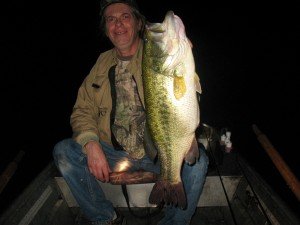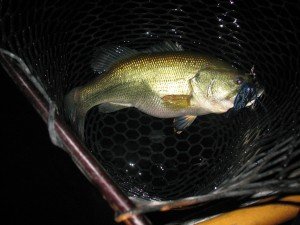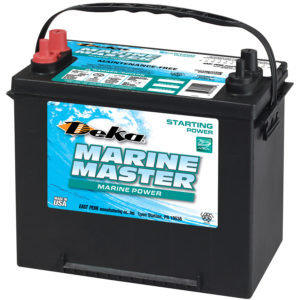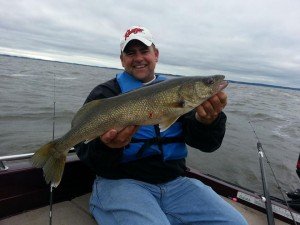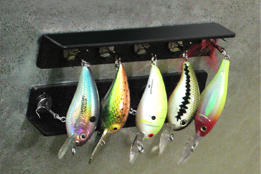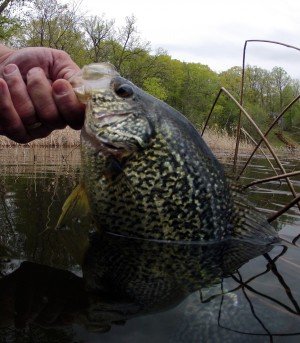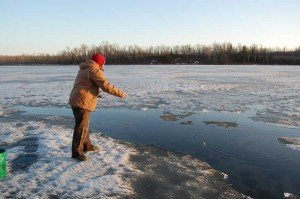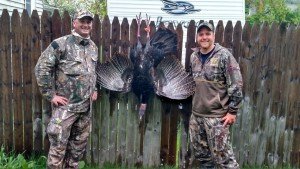The late summer period, just about two weeks prior to turnover, have produced multiple trophy largemouth and smallmouth summer bass for my fishing partners and I for more than 50 seasons. Chasing off-shore giants during the latter part of the summer season has been quite rewarding. The largest bass in the system can be locating on main lake basin forage in various parts of the water column, or by pounding crawdads on pelagic humps, ledges and basin channel depressions as the hot weather period is just about ready to start to change. Big bass seem to sense the oncoming seasonal change and slight variance in water temperature preceding the start of the first stage of turnover, and gorge themselves for approximately a 2 week time frame. Looking back at our meticulously kept logs and data ... [ Read More ]
When to feed and not feed line when Lindy rigging
What separates Lindy rigging from other walleye presentations is the use of a sliding weight. A jig has the lead molded onto the hook, a split shot rig has the spilt shot weight pinched securely on the line, a bottom bouncer has the leader tied directly to the trailer wire. The sliding weight on the Lindy rig can be used to let the fish run. I use the words “can be” because there are many days on the water when rigging, where you do not have to feed line. Let me back up and explain rigging to those of you unfamiliar with rigging. Again the key component to a rig is that the fishing line slides through a hole in the weight. So when a fish bites and you feed line to the fish, the line glides uninhibited through the weight, and the fish feels the weight far less than if the weight was ... [ Read More ]
Minnesota Fishing Reports Clubs – St Cloud, MN Area Lakes & Rivers
Are you looking for up to date fishing reports in your area? Are you looking for a great spot to fish? Do you want to know how to fish that lake and what to use in the next week? We have assembled a top notch team who provide you up-to-date and good St. Cloud, MN area fishing reports for you in our Minnesota Fishing Reports forums. Even better for you, they have more and even better detailed fishing reports for you in our new Minnesota Fishing Reports Club. In the new Minnesota Fishing Reports Club, we include a few predictive tips too! The Fishing Report Team lets you know how to prepare for your fishing trip, what to look for and what we would do in the next week or so - in the area YOU WANT TO FISH. If you don't see what you are looking for, just ask and we will ... [ Read More ]
Lessons Learned From the Lake Commandos
What happens when you dump two expert anglers on unfamiliar water and tell them to conquer it … and each other? A Texas buddy of mine and I pulled up to a bar that started in 19 feet of water and topped out in 5. We were both fishing a Carolina rig, and both using a Berkley Chigger Craw for bait. So why did he catch five bass in the next 10 minutes while I remained skunked? It’s hard not to be fascinated with the factors that affect fishing success. And as much as one tries to break things down to key elements such as bait selection, speed, location, color, etc., the more frustrating it can be—the number of possible combinations is endless. When we launched Lake Commandos our goal was simple: to highlight the thought processes successful anglers use when developing effective ... [ Read More ]
marine battery charger |No Time for Downtime
No Time for Downtime by Ron Anlauf There is no fun to be had when equipment malfunctions or breaks down, especially when you’re trying to spend some quality time on your favorite body of water. It’s even worse when you’re miles from anywhere and there’s no immediate help available. Unfortunately it happens but a lot of the problems can be avoided with a little preparation and upkeep. One of the more common issues includes power or the lack there of. Without it there’s no way to start today’s bigger engines and a jump from a charged battery may be the only way to get going. You might be able to jump from a trolling motor battery if you have cables along. Or maybe pull a battery and replace the dead one but you better have a few tools ... [ Read More ]
Early Season Walleye
Early Season Walleye While a lot of Walleye fishing consists of deeper fishing off of points, flats and weeds, through much of the year for the next couple of months dominant Walleye patterns will occur in shallow water due to the spring spawning ritual of Walleye. As early as late ice to ice out Walleye begin to make the move to their eventual spawning grounds. On rivers, Walleye will swim as far upriver as possible until reaching dams and other river blocking structures. Once reaching these structures Walleye will find likely areas usually within a mile or two of that structure to deposit their eggs such as rocky or sandy shorelines behind current breaks. On lakes, Walleye will move up to shallow water from their deeper winter haunts depositing their eggs in likely areas such as ... [ Read More ]
Crankbaits For Cold Water Bass – Spring Bass Fishing Tips
The beginning of spring is here, however the deep chill in the air would lead you to believe otherwise. The nights are still cold but the warmth of the daytime sun makes up for what the chill of the night has taken. This is an excellent opportunity to chase after some pre-spawn bass. This is a transition time of year for the lakes and ponds. A time when the water temperatures are beginning to rise and the weed growth is very sparse and small. A lake or pond goes thru this spring transition or “turn over” just as it does in the fall. The warm water is at the bottom and the cold water is at the top. During this turnover period the water begins to mix and it can create quite a mess of the water. Prior to this transition however, the bass can become quite active and feed heavily on ... [ Read More ]
Spring Time Panfish.
Spring Time Panfish My favorite time of year is quickly approaching. The time when the Red Wing Black Birds start arriving, when the call of the Loon greets my morning, and the chill of the crisp morning air hits my face as I launch the boat on to one of my favorite crappie waters. YES, I love chasing springtime crappies! Typically they are eager to bite if you put in the time to pattern them at this time of year. I usually start my open water fishing within 3-4 days of the ice melting off my favorite lakes. Shallow, dark bottom bays will attract the ‘bugs’ and minnows…and the crappies and ‘gils will follow as they are interested in putting on the feedbag before the spawn. A few people have the misconception that the fish are spawning during this early period, because when they clean ... [ Read More ]
Late Ice Safety
The time has come when all the permanent ice houses are off the lakes. There is far less traffic on the lakes. With spring just around the corner and warm temperatures this past week and more certainly to come, today I want to remind everyone about late ice safety and the effect that the warm spring thaw has on the lakes. As the temperatures rise to the 40’s during the day and are only dropping just below freezing at night, all the snow on top of the ice is turning into one big “lake.” if you will, on top of the ice. Even with less than a week of these warm temperatures, travel on the lakes has already come to a screeching halt, and very soon we will need to pull out the rubber boots, cleats, and possibly the waders to get on that hot panfish bite. The fishing picks up a ... [ Read More ]
The Perfect Turkey Hunting Plan
I love to turkey hunt but, for me, sitting for long periods is a challenge. When I first started turkey hunting, I’d hunt in the same spot until about nine o’clock and then head home. On the way home, I’d see toms strutting everywhere. Through observation, I soon realized something was wrong. Since this time of 'enlightenment', I've developed a solid turkey hunting plan that is carried out in phases. The plan has worked very well for me and hopefully it will for you too! The key to the plan is, each phase of the hunt consists of the time of the day that typically corresponds to certain turkey behaviors. I hate wearing a watch, but when I am executing my hunting plan, I use the clock on my cellphone to keep me on track, work my hunting phases, and remain disciplined. If I get bored or ... [ Read More ]
